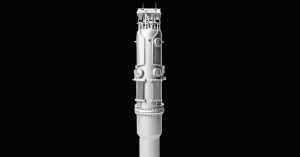In the fictions of Mark Twain and CSI and more, the identification of fingerprints is one of the most well-known methods for solving crimes. In real life, collecting fingerprints left on a window or doorknob is a delicate science, as well as an important one. Preserving fingerprints can help definitively link a person to a crime, especially since the US government maintains biometric databases of prints from millions of people—including previously convicted and suspected criminals, government employees, military personnel, and others.
To learn more about the science of fingerprint collection, WIRED caught up with Matthew Steiner, a certified senior crime-scene analyst with more than 20 years of experience. He demonstrated how to lift fingerprints off different surfaces, so they can be viewed under a microscope.
“The first thing we want to consider is the surface itself,” Steiner says. “The most ideal surface for fingerprints is something that’s smooth and nonporous,” like plexiglass. Steiner uses a special white powder to gently dust fingerprints, making them visible to the human eye. Tape is then placed over the powder, to lift prints off the surface and preserve them for later analysis.
But what if fingerprints are on a surface that isn’t flat, like a door’s handle? In those cases, Steiner makes a silicone cast of the item, which is then sent to a lab. Steiner can even lift fingerprints from items that have been rained on. “Fingerprints are comprised mostly of water,” he says, but also a small percentage of minerals, salts, amino acids, and lipids. If an object has gotten wet, Steiner can spray it with a special black fingerprint detection chemical. It reacts with the remaining oils, rendering the print visible.
More Great WIRED Stories
- Andrew Yang is not full of shit
- How measles leaves kids exposed to other diseases
- What’s blockchain actually good for, anyway? For now, not much
- How to free up space in Gmail
- The untold story of Olympic Destroyer, the most deceptive hack in history
- 👁 Prepare for the deepfake era of video; plus, check out the latest news on AI
- 🏃🏽♀️ Want the best tools to get healthy? Check out our Gear team’s picks for the best fitness trackers, running gear (including shoes and socks), and best headphones.



